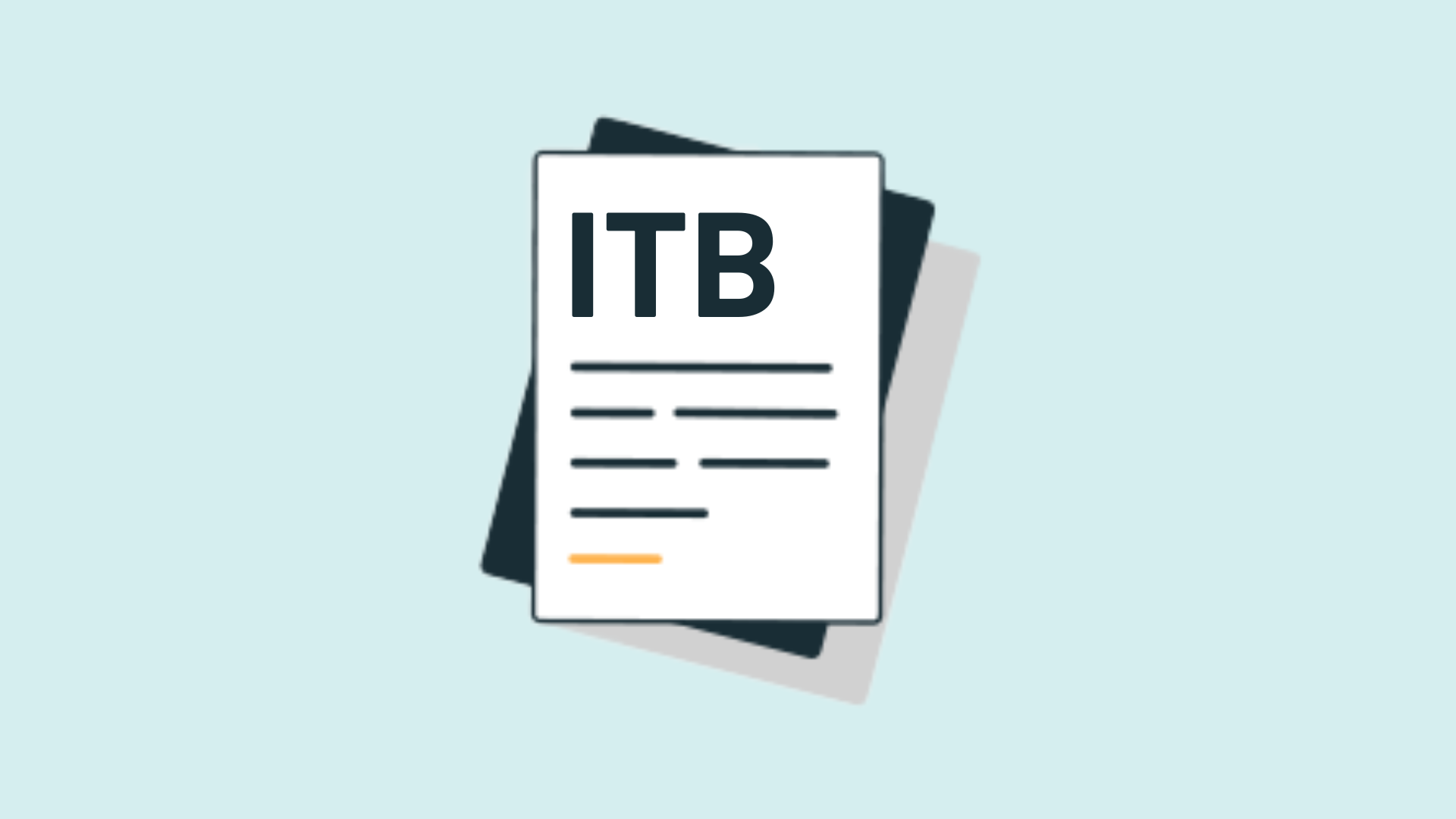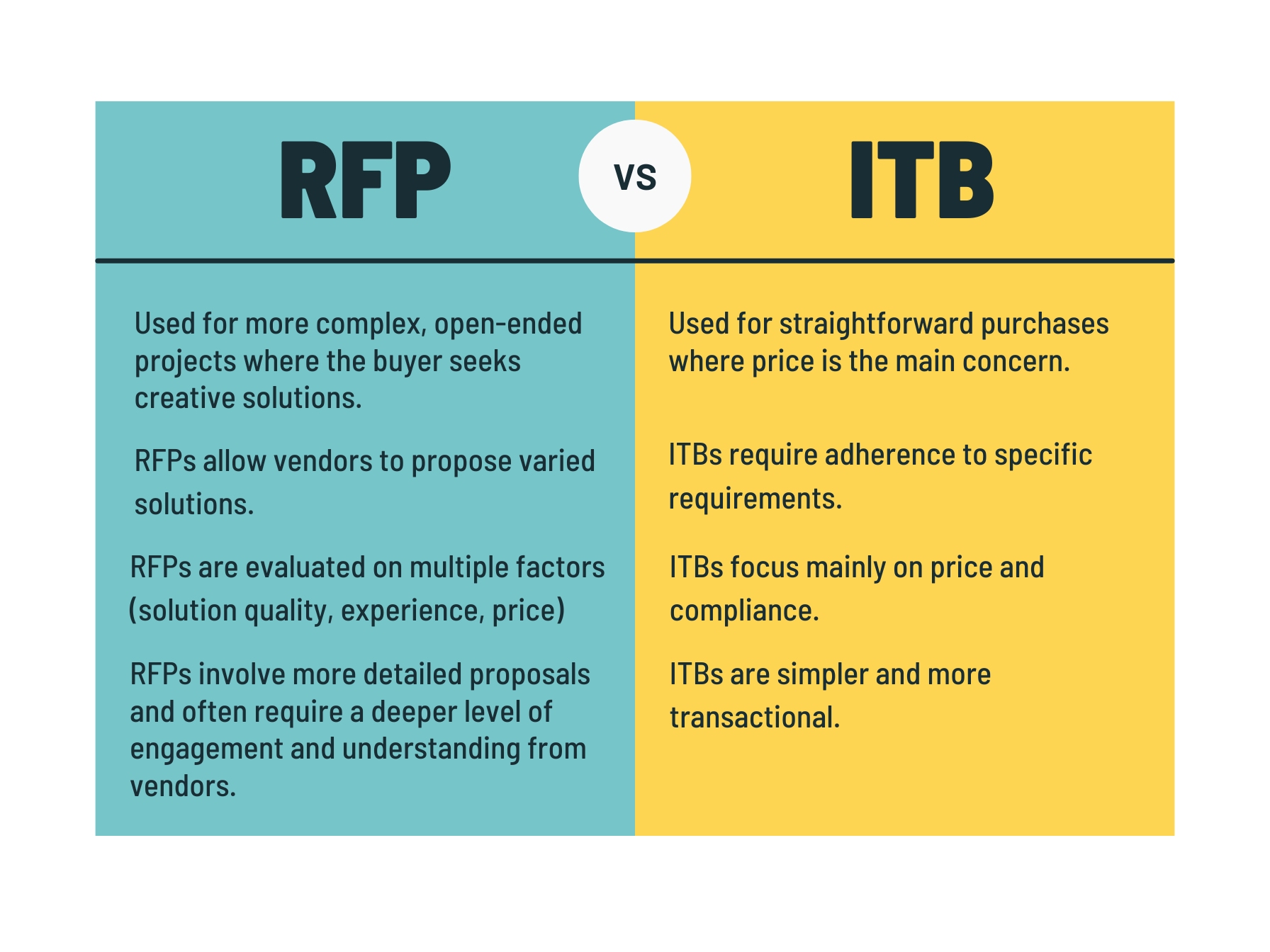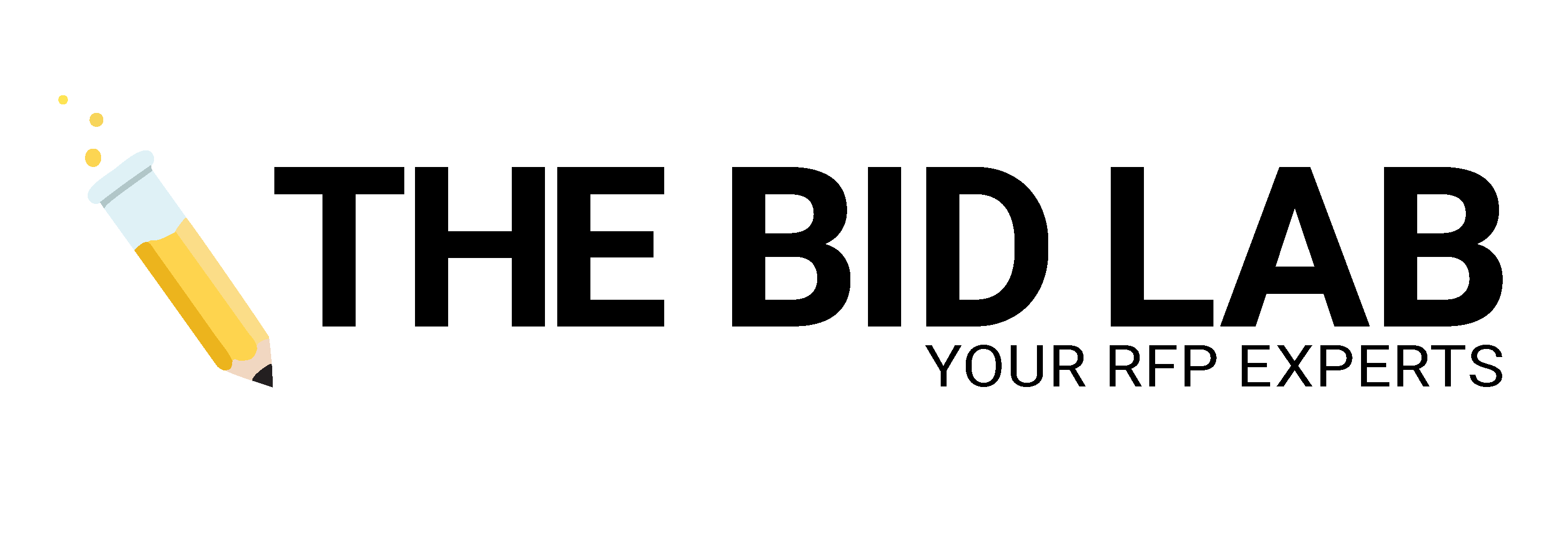What Is an Invitation to Bid?


Have you ever been excited to receive an invitation to a much-anticipated party? Well, in our own industry, we have a different type of invitation that excites us — an ITB! To give you a little context, an Invitation to Bid (ITB) or Invitation for Bid (IFB) is a call for contractors to submit a proposal for a specific product or service that an organization knows it wants/needs. While it’s related to a Request for Proposal (RFP), an ITB is usually more price-focused and typically involves a more streamlined bidding process.
But what exactly is an ITB, and how can you use one to generate growth for your business? Let’s talk about this lesser-known cousin of the RFP and what it entails. RSVP to our invitation for valuable knowledge, and keep reading to find out!
ITBs Are Fundamentally Different From RFPs
So, what does it mean to develop an ITB? It’s easy to confuse an ITB with an RFP if you don’t know the purpose and nuances of each. Let’s start with the ways that they’re different. RFPs factor in both the cost and the solution for the requested products and services. For example, a beverage company requesting vendors to handle a corporate retreat may issue an RFP to find an event planning and production company.
On the other hand, organizations may choose to issue an ITB when there’s no substantial difference in varying products or services. In this instance, price is the most important component for evaluation. Rather than analyzing how you’d approach the project, focus on the cost elements throughout your proposal. In this example, a beverage company soliciting vendors to supply 50,000 red Solo cups may issue an ITB to find a supplier.

They’re Project-Centered and Specific
It’s all about the project. Companies issue an ITB when they have a specific project in mind. They already know exactly what product or service they need, how much they need, and when and where they want it. An ITB solicitation will often describe the planned project in detail and list submission requirements, including deadlines, project scope and duration, minimum qualifications, mandatory service standards, and required warranties. It will also describe the overall selection process and the criteria for selecting a winning contractor.
With this information in mind, the bidder must understand how the offeror’s procurement process works. Always keep your contact for the bid handy to address any questions. Since the bidder is not offering their own solution (like in an RFP) but the ITB solution, bidders should meet those exact expectations. Be clear about why your pricing makes you the right choice for the job.

They’re Price-Focused and Competitive
Cost, rather than the bidder’s plan for completing the project, is vital in an Invitation to Bid. Evaluators generally award the bid contract to the contractor with the lowest overall fees while still delivering on the requirements. As such, you’ll want to focus on effectively estimating your cost to deliver on the contract goals. Consider all expenses you’ll need to include and how they will factor into the final pricing for the project.
An ITB typically results in one of the following types of fixed-price contracts:
- A firm-fixed-price contract
- A fixed-price contract with economic price adjustment
- A fixed-price contract with prospective price redetermination
Although having low prices can win you bids, you’ll want to be transparent with the offeror about your costs. This is because the evaluation for ITBs is much more straightforward. There’s pressure for contractors to bid low, but make sure your low bid also covers your operating costs. After all, operating at a loss will make it difficult to follow through on the contract’s requirements.
They’re Used Regularly in Specific Industries
Naturally, certain industries tend to use ITBs more frequently than others. So you may be more or less likely to see them depending on your industry. For instance, government organizations often use ITBs to achieve the required higher transparency standards and help prevent corruption and favoritism.
Like the government sector, academic institutions also regularly use ITBs for the same reasons of transparency. A school or university might choose to release an ITB when it wants to supply students (say, a 100-pack of disposable masks per university student, for example). The institution already knows its needs, requirements and timeline. Price, then, becomes the most important factor in the decision-making process.
Although ITBs are more price-focused than their RFP cousins, many of the same rules will apply. When submitting bids in response to ITBs, always read the requirements carefully, respond methodically and submit with intentionality. Be sure to treat ITBs with the same level of importance as RFPs. Start early and ensure all deliverables are ready before the submission deadline.
ITBs Are a Valuable Way to Grow Your Business
Businesses providing goods or services can widen their horizons by standardizing their offers in an ITB format. Most industries are ripe for a robust ITB strategy. Lucrative opportunities in construction, manufacturing, and other booming fields await. Anyone can incorporate our tips and tricks to start expanding their business.
Still Wondering About Invitation to Bids (ITBs)?
Just joined the party? Or, wondering what to do after having just received an IFB? If so, we’re here to help! Learn more about the request for proposal process basics with our glossary of common procurement terms. Then, check out how to find and source RFPs (we recommend our own user-friendly RFP search engine for that!). We can even help you get your get your RFP layout exactly right. See, The Bid Lab helps companies like yours perfect their ITBs and feel confident in their work. So reach out! We’ll evaluate your pain points and provide real, proven solutions to drive your success in the bidding process. For a free, 15-minute consultation, contact us at 1-844-4BIDLAB or email us at respond@thebidlab.com.
